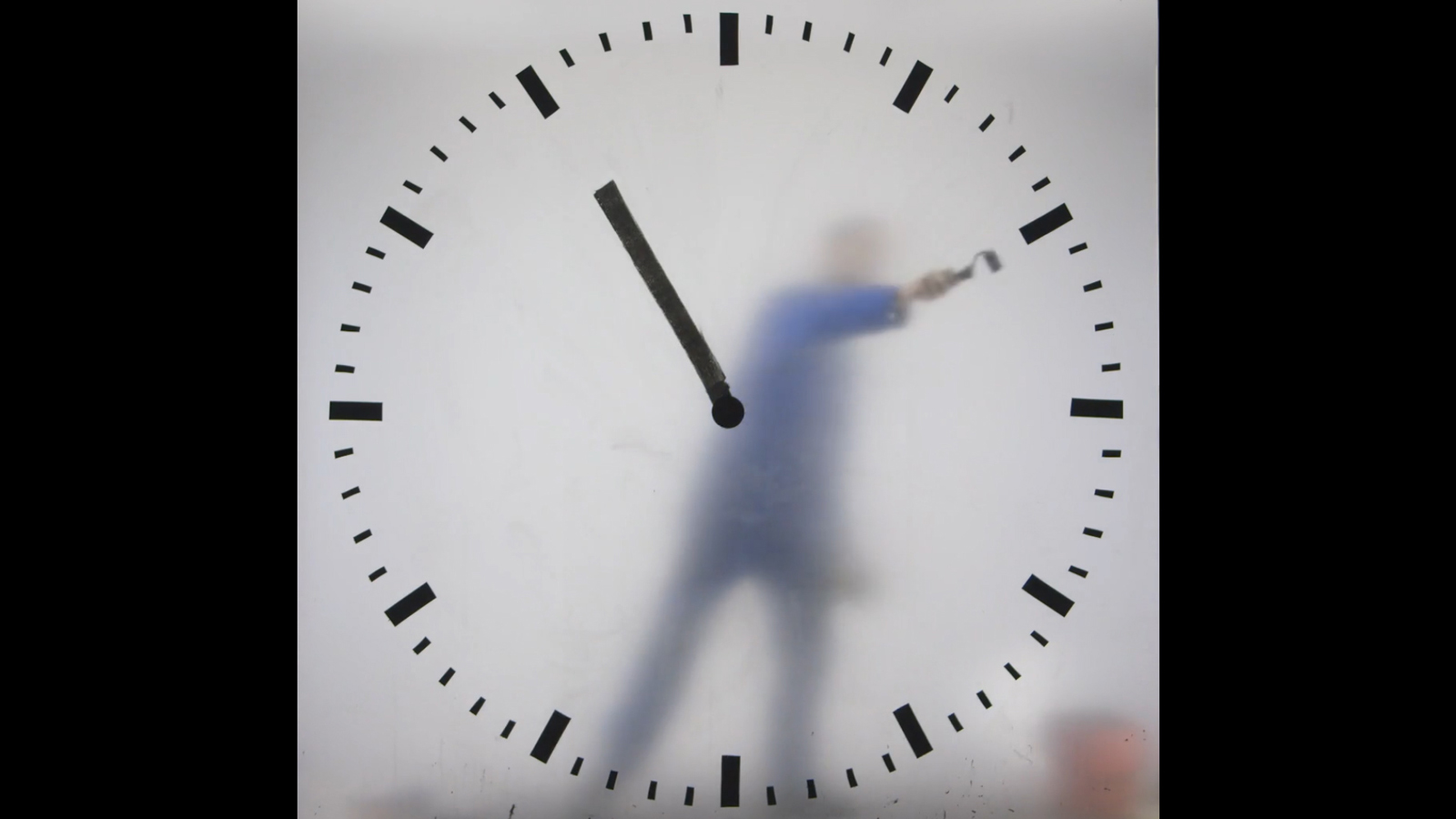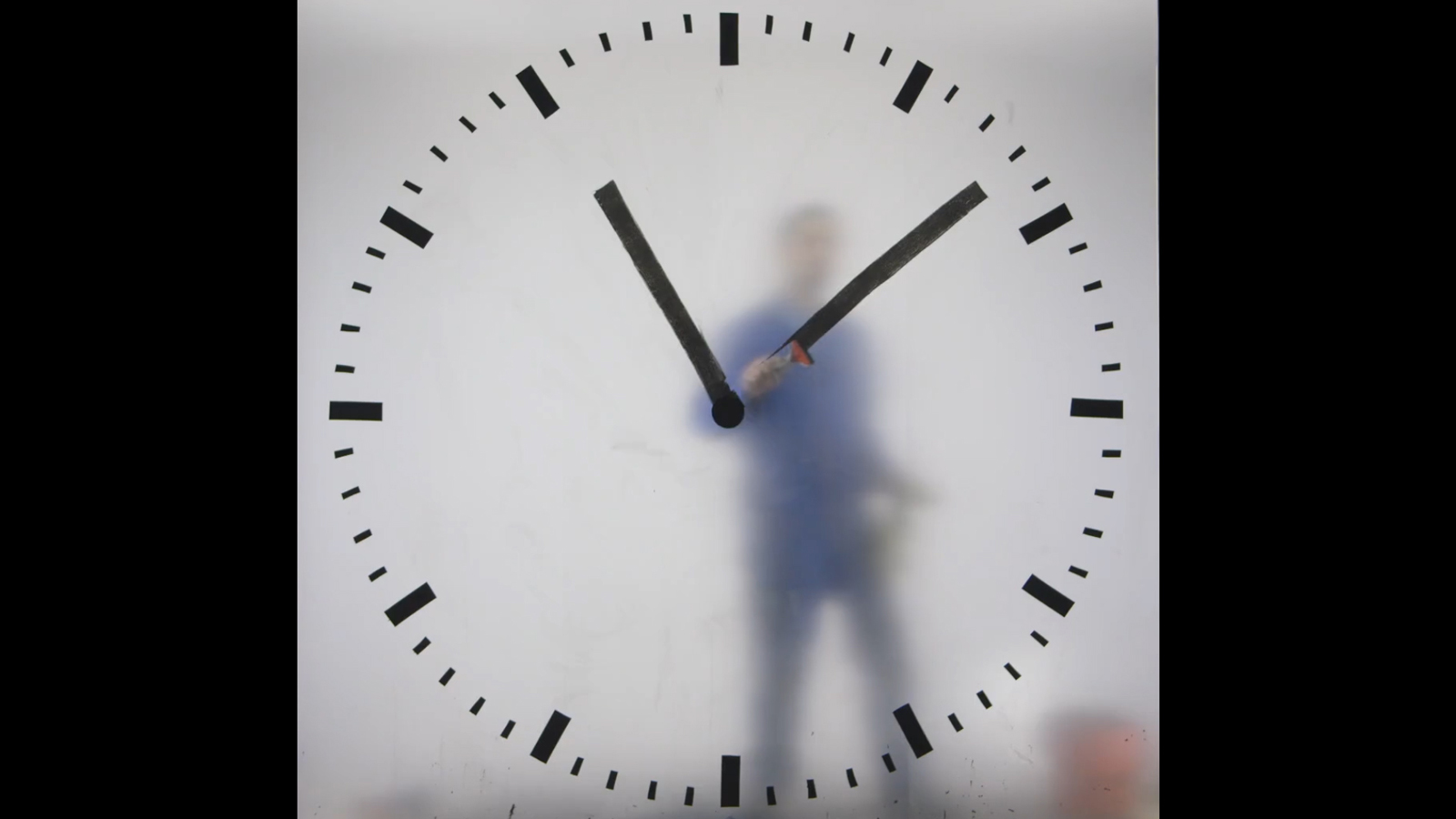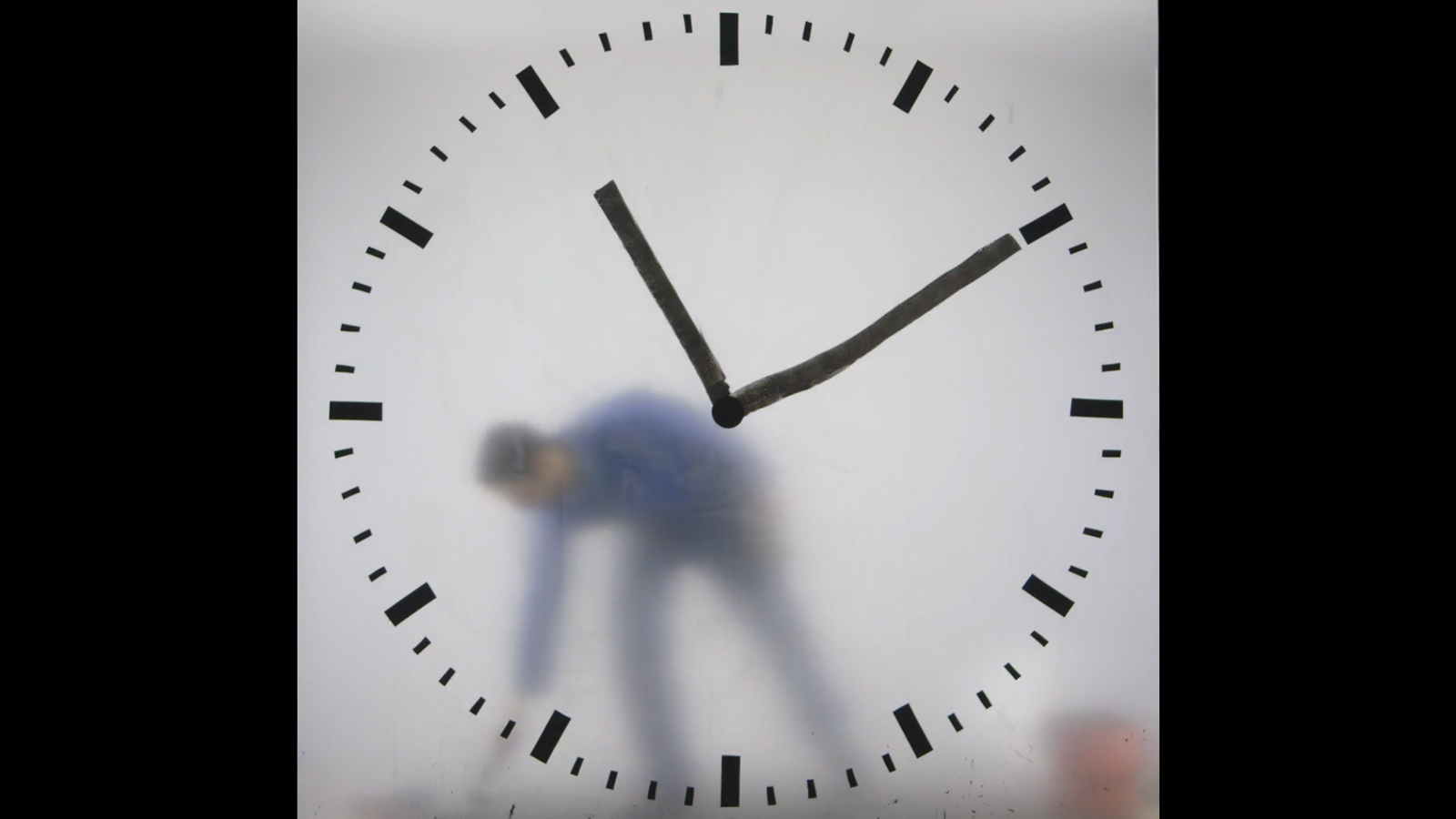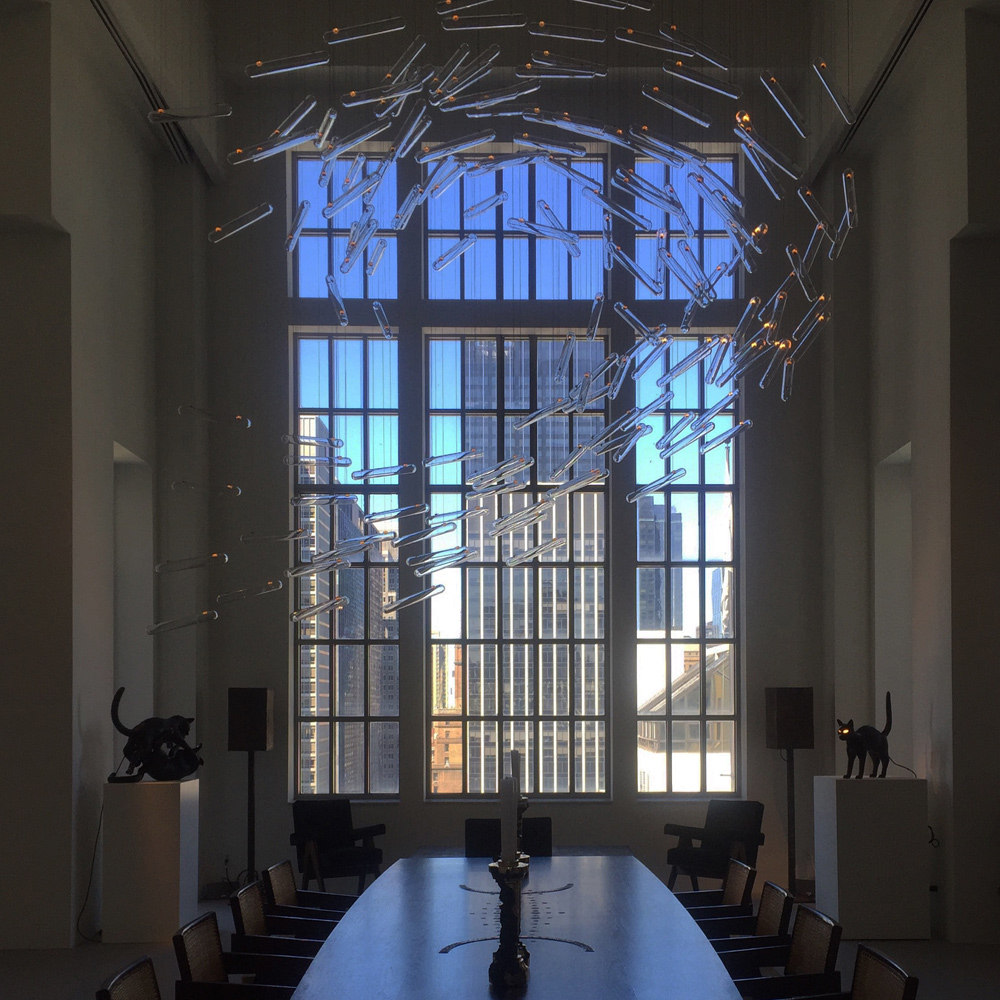Maarten Baas Paints the Time at Schipol
A new variation of the Dutch designer’s conceptual clock takes inspiration from the Amsterdam airport itself


Dutch designer Maarten Baas revisits his 2009 “Real Time” concept in a new site-specific project commissioned by Amsterdam’s Schiphol airport, following in the footsteps of other “Real Time” clocks found in the nearby Rijksmuseum, as well as the Victoria Museum in Melbourne and MoMA, New York. This edition is a gigantic three-meter-high version found in Lounge 2 at the European hub that sees 15 million people pass through its halls. The team at Schiphol were keen to break down Holland’s traditional images of clogs, tulips and windmills with something a little out of the box. Although, “Real Time” Schiphol certainly is a box, in its own way.

“Real Time” is a term used in the film industry in which the duration of a filmic scene is the same length as it was originally recorded. “I play with that concept in my Real Time clocks by showing videos where the hands of time are literally moved in real time,” says Baas. Each “Real Time” clock shows a performance made by Baas that takes exactly 12 hours to complete a cycle and thus 12 hours to watch it in its entirety. A hyper-real representation of time, and true study of the meanings and connotations of time and its passing.

At the airport, the designer draws inspiration from the location itself: the many anonymous men and women who studiously maintain its halls and infrastructure in their blue overalls. “The Real Time Schiphol Clock is basically a big box hanging from the ceiling in Lounge 2. For this work I decided on the most archetypical form of a clock, but it has a ladder going up to it and a little door that you wouldn’t even notice at first glance.”

The ladder creates the illusion that they let this fellow into the box to go about his work, going about his ritualistic cycle of creating, cleaning and progressing the clock’s hands with his red bucket and yellow cloth. The red, yellow and blue motifs present in the performance act as homage to two of the most prominent Dutch artists, Piet Mondriaan and architect Gerrit Rietveld.

And with the progressing of time since Baas’ first “Real Time,” passengers and viewers of Schiphol’s clock are encouraged to freeze time and add to the performance through social media. The impact of this labor intensive piece remains though—in whichever setting Baas places it—providing a jarringly analogue and physical point of comparison to our digital lives.
Install images courtesy of Bart Brussee, “Real Time” stills courtesy of Maarten Baas












